WORKSHOPS
The aim of the workshops is to encourage the reuse of material and the circular economy, to integrate the community and to raise awareness about sustainability. The different workshops held in the community presented activities to sensitize children and adults about the importance of environmental care.
Toys
In this activity, children were encouraged to build their own toys using materials that would be discarded. The stimulation of creativity and autonomy, in a playful way, helps in the formation of independent and critical individuals, and promotes environmental education.
Ecobag
The fabric bags manufacture using “old” t-shirts introduced an alternative of rational use and reuse of fabrics, arousing creativity and concern for waste reduction. The manufactured products also open the possibility to generate income and contribute to the family budget.
Concrete pots
The workshop was developed from the reuse of fabrics for the production of cement pots, in order to avoid the discard of this material in the environment. It is an alternative that generates income and it is aligned with the concept of upcycling, which transforms waste into new products, optimizing the life cycle of materials.
Painting, drawing and stamping! Encouraging children’s creativity...
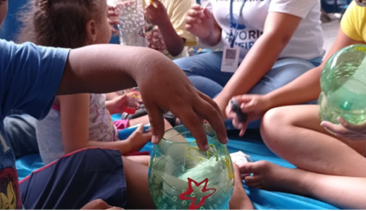
Playing and recycling are potentially transformative actions in a community, helping to raise more eco-conscious kids.
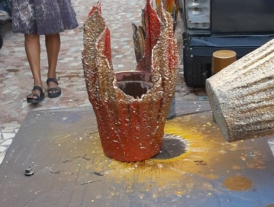
Decorative objects manufactured with waste material are creative alternatives to a second source of income.
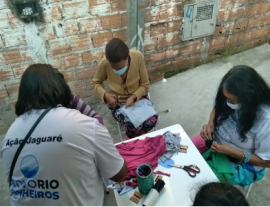
During the workshops the participants learn not only how to make objects, but they also discuss about the importance of sustainable development.
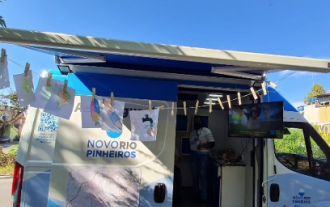
Kids’ drawings are displayed to the community. Outdoor art decorates and promotes the material.
Free drawing
The participants were invited to draw about themes such as pollution, the water cycle, aquatic life, river preservation and waste. After creative time, a chat was held about each drawing and what it represents.
Natural stamp
A tree leaf is placed under a sheet of bond paper; then, we use crayons or color pencils to scribble on the surface of the paper till we get a ‘copy’ of the tree leaf printed on the bond paper that could be named “leaf print”, similar to our “fingerprint”. With this activity, the participants learn about the importance of trees as protectors of river banks.
Stencil
The sentence “The Pinheiros River starts here - Don’t litter” and a fish drawing made in stencil art embellish the course of the tributary of water bodies and alert to the importance of the correct waste disposal for the conservation and preservation of the rivers.
‘Abayomi’ doll
The ‘Abayomi’ dolls rescue the culture of African roots and offer an alternative for generating income through artistic and handmade production. It is a low-cost manufacture and can be made with reused fabrics, contributing to the environment by reducing waste.
...and understanding that the river needs to be looked after!
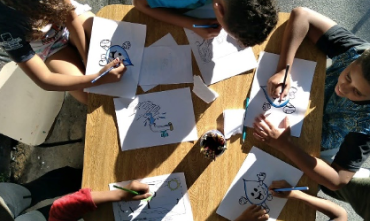
Coloring and drawing are ways of learning about water and its importance for the environment.
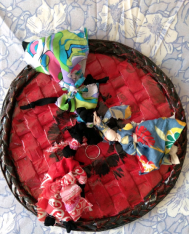
Turned to keychains, the ‘Abayomi’ dolls offer an alternative for generating income.
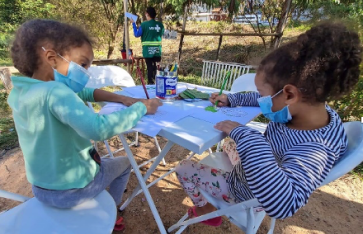
Through colors, it is possible to connect content with art. Some children connect light colors with cleanliness and the environment, and dark colors with pollution and dirt.
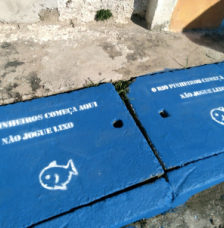
SKnowing where the river runs thru’ is important information for effective awareness actions on waste disposal.
